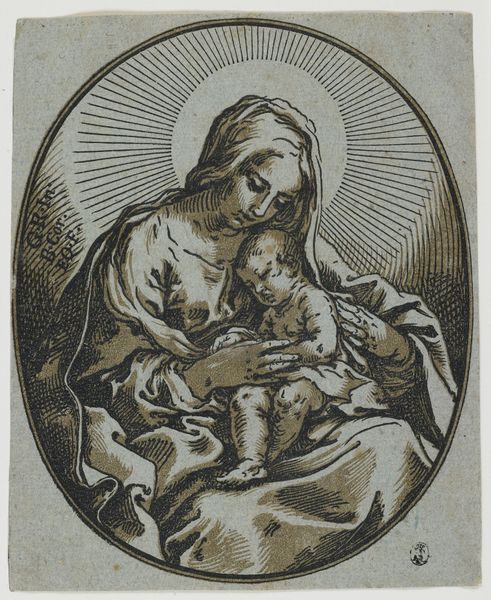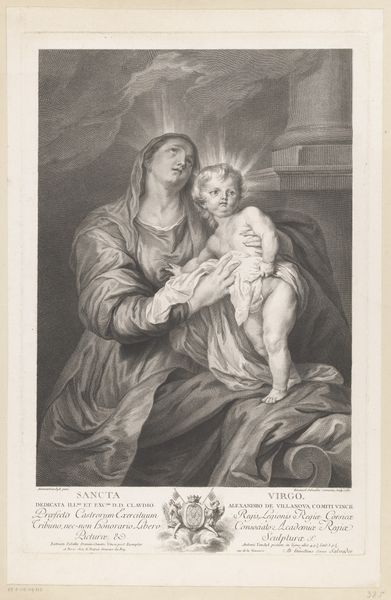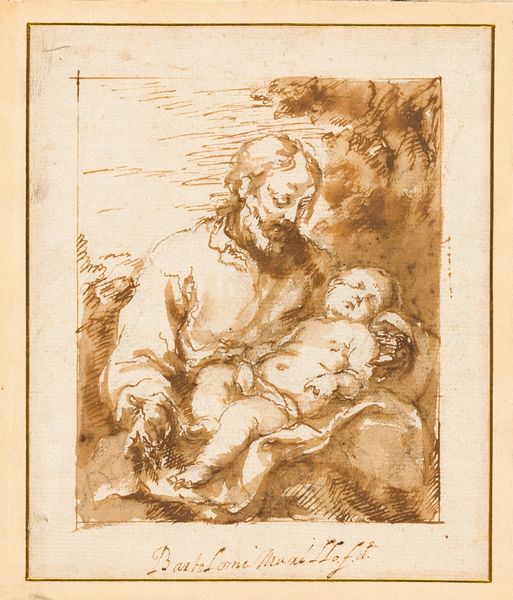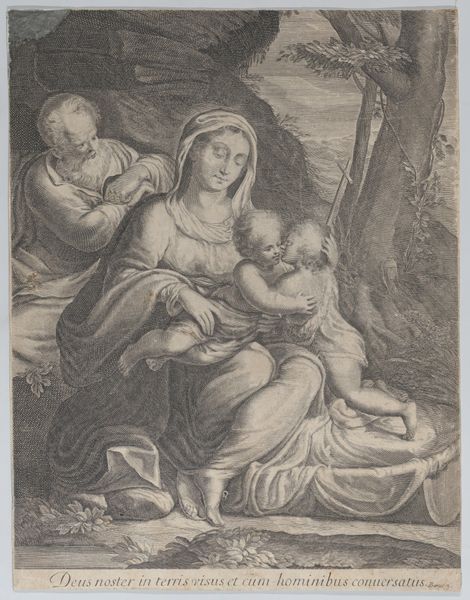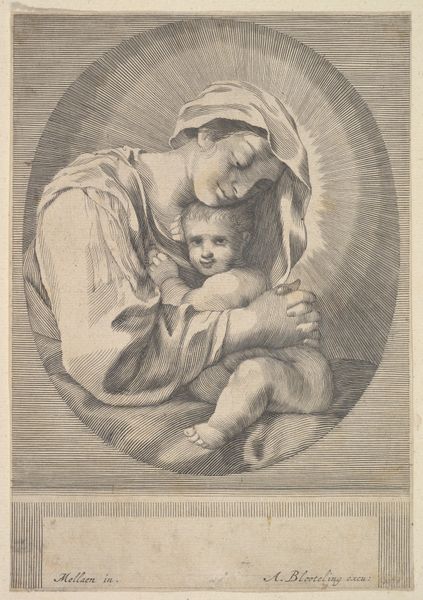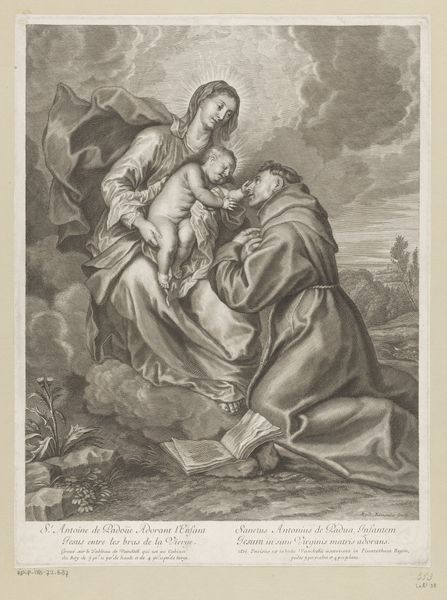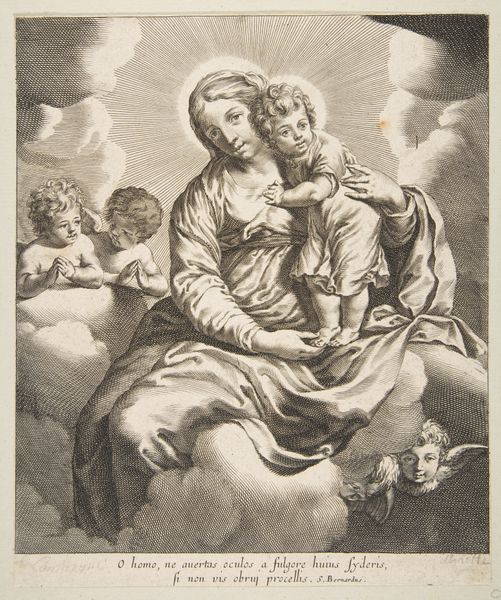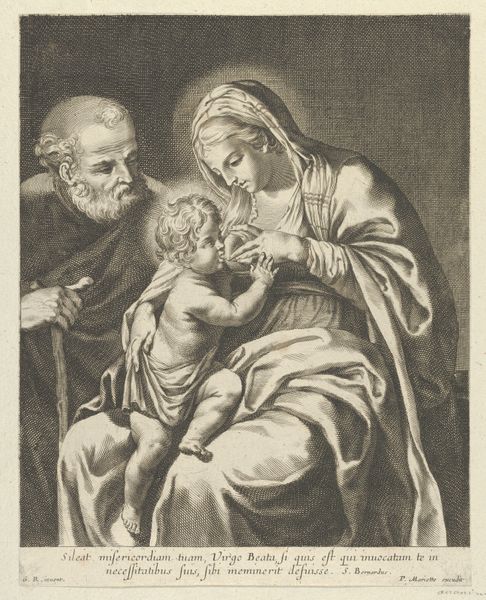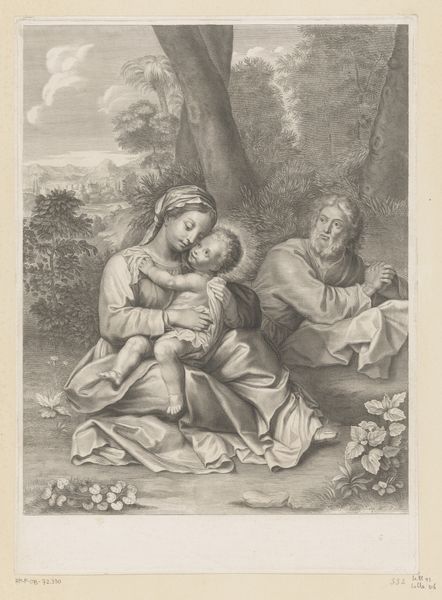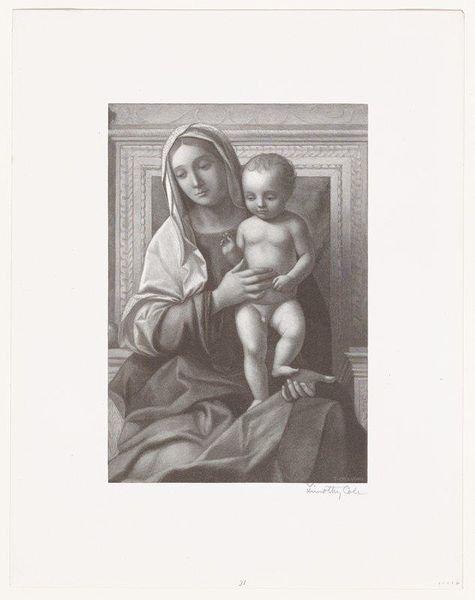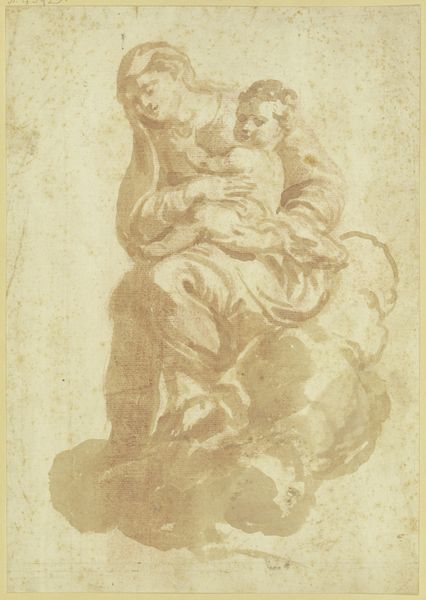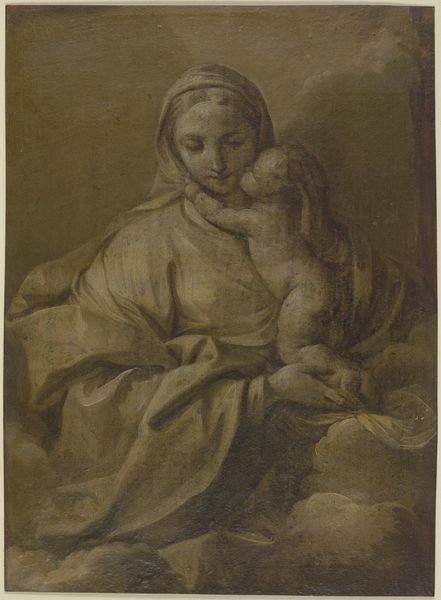
painting, watercolor
#
portrait
#
painting
#
figuration
#
watercolor
#
watercolour illustration
#
watercolor
Dimensions: height 140 mm, width 107 mm
Copyright: Rijks Museum: Open Domain
Editor: Here we have "Madonna met kind," or "Madonna with Child," a watercolor painting made around 1826-1830 by Pieter Christoffel Wonder. The texture created by the watercolour gives it an almost ethereal quality. What draws your attention to this piece? Curator: What intrigues me is not so much the religious subject matter itself, but the context in which Wonder, as the artist, is producing this image, and how the use of watercolour—often considered a less "serious" medium—contributes to the artwork's interpretation. Can we consider Wonder’s artistic choices? Does the relative accessibility of watercolor change its place in Dutch society? Editor: So, you are suggesting we consider it less for its devotional imagery and more for the implications of its production? The ready availability of watercolour means something? Curator: Precisely. It moves away from the grand oil paintings commissioned by the elite, toward something reproducible and perhaps more widely circulated. Consider the networks that watercolor, as a commodity, might enable, its accessibility fostering a certain democratization of image consumption, for both men and women, at that time in Dutch society. Editor: That’s fascinating! So even a traditional image like the Madonna and Child can offer insight into social changes through its materials and the means of its production? Curator: Indeed. It pushes us to rethink conventional assumptions of high versus low art. Watercolor, its affordability, portability; each aspect allows different strata within 19th-century Dutch culture the ability to produce images themselves, challenging the previous artistic structure, perhaps by offering ladies art training at academies? Consider the female artists! Editor: I’m starting to see how materials aren't just neutral, but charged with social and historical meaning. Curator: Yes. A devotional image rendered accessible opens an interesting dialogue between art, class, and cultural shifts, no? It isn't just about a religious scene; it’s about democratization through art supplies and instruction!
Comments
No comments
Be the first to comment and join the conversation on the ultimate creative platform.
